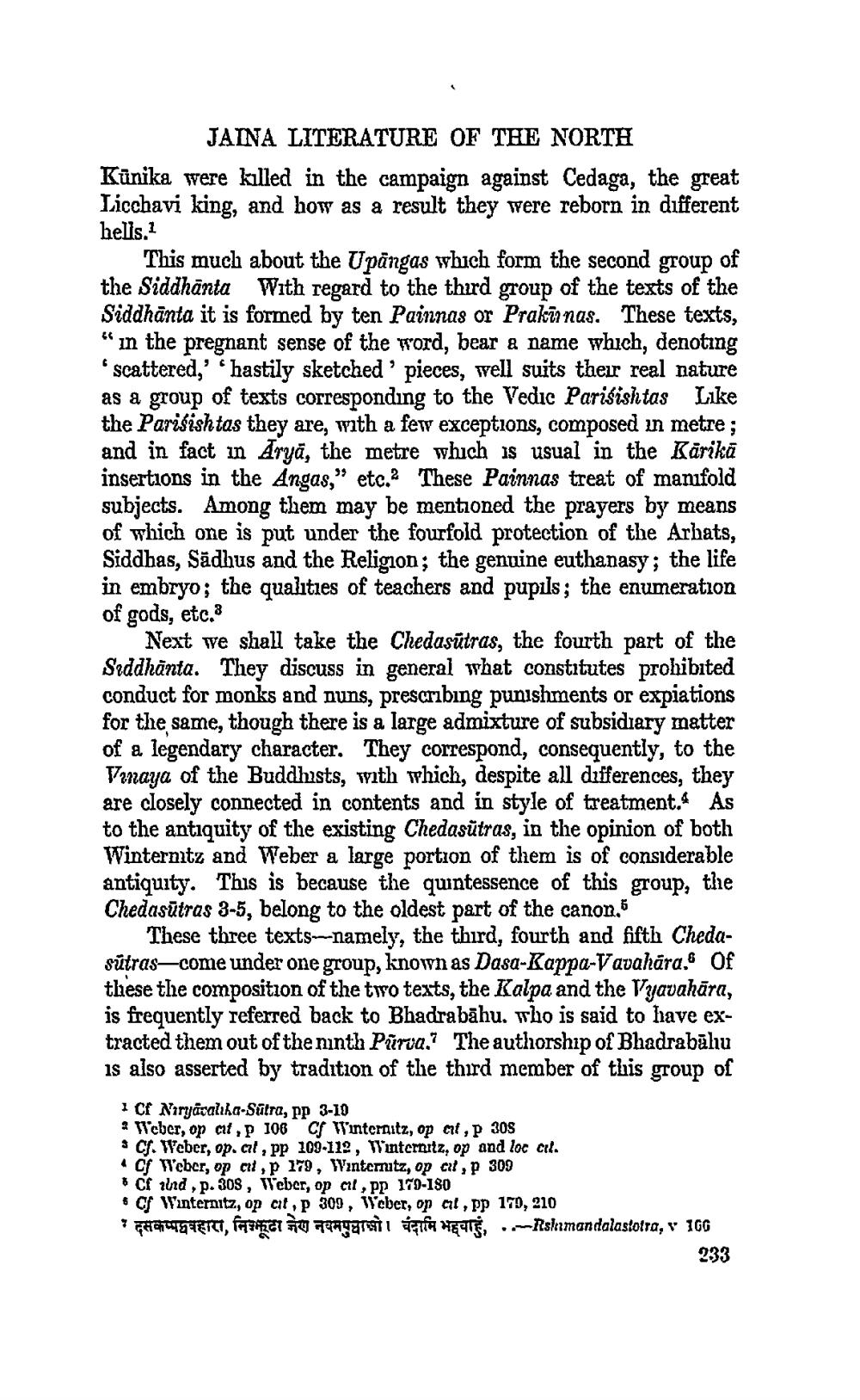________________ JAINA LITERATURE OF THE NORTH Kunika were killed in the campaign against Cedaga, the great Licchavi king, and how as a result they were reborn in different hells. This much about the Upangas which form the second group of the Siddhanta With regard to the third group of the texts of the Siddhanta it is formed by ten Painnas or Prakarnas. These texts, "in the pregnant sense of the word, bear a name which, denoting scattered,' hastily sketched pieces, well suits their real nature as a group of texts corresponding to the Vedic Parisishtas Like the Parisishtas they are, with a few exceptions, composed in metre; and in fact in Arya, the metre which is usual in the Karika insertions in the Angas,' etc. These Painnas treat of manifold subjects. Among them may be mentioned the prayers by means of which one is put under the fourfold protection of the Arbats, Siddhas, Sadhus and the Religion; the genuine euthanasy; the life in embryo; the qualities of teachers and pupils; the enumeration of gods, etc.3 Next we shall take the Chedasutras, the fourth part of the Siddhanta. They discuss in general what constitutes prohibited conduct for monks and nuns, prescribing punishments or expiations for the same, though there is a large admixture of subsidiary matter of a legendary character. They correspond, consequently, to the Vinaya of the Buddhists, with which, despite all differences, they are closely connected in contents and in style of treatment. As to the antiquity of the existing Chedasutras, in the opinion of both Wintermitz and Weber a large portion of them is of considerable antiquity. This is because the quintessence of this group, the Chedasutras 3-5, belong to the oldest part of the canon, These three texts--namely, the third, fourth and fifth Chedasutras--come under one group, known as Dasa-Kappa-Vavahara. Of these the composition of the two texts, the Kalpa and the Vyavahara, is frequently referred back to Bhadrabahu. who is said to have extracted them out of the ninth Parva.? The authorship of Bhadrabalu is also asserted by tradition of the third member of this group of 1 Cf Noryataliha-Sutra, pp 3-19 Weber, op cit,p 106 CJ T'interaitz, op af, 305 * Cf. Weber, op. at, pp 200-112, Vintertz, op and loc cil. . Cf Weber, op cut, P 179, Wintemutz, op cit, 309 *criind , p. 308, Weber, op cit, PP 170-180 * Cf Winternitz, op cit, 309, Weber, op at, pp 170, 210 ***FIERT, PRECT O FATTI G TS, .Askimandalas.otra, 166 233




